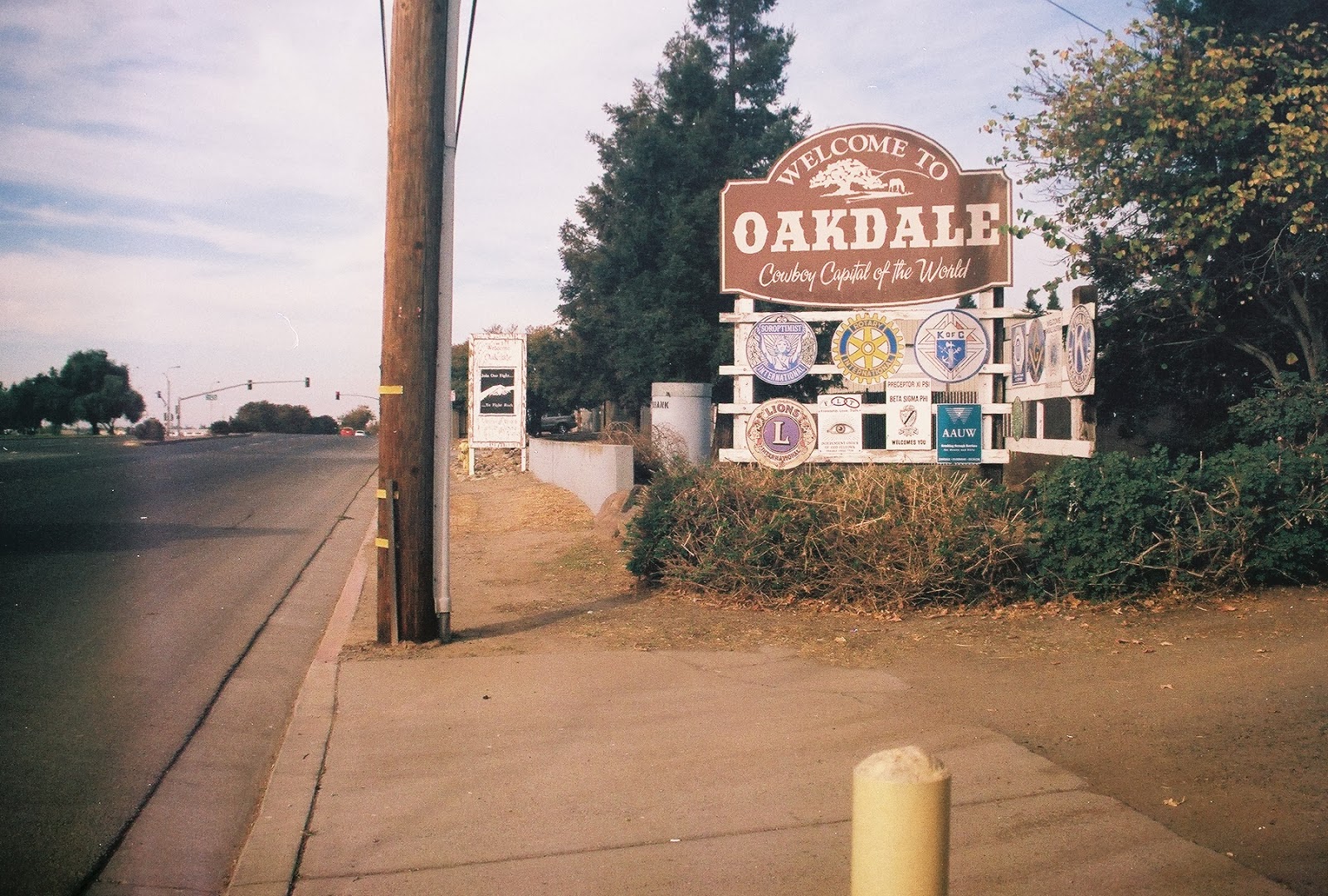Oakdale
is not a place you go to; it is a place you leave from.
And
yet, nonetheless, you found yourself here; somehow, perhaps, you took a wrong
turn. Or maybe, just maybe, you encountered it as a tiny speck on the map and
were struck by a dumbed, irresistible curiosity. Somehow in some way, you made
it here.
It
was meant to be.
And
you found it to be that always-gonna-be-there-never-gonna-change kinda place. It
didn’t have the alternativeness of the Bay or the Rush of the Oversized Apple. Oakdale,
instead, moved with a near-suspended, otherworldly pace. Even with time’s
apparent passage, little changed, little disclosed itself as unfamiliar or new.
Oakdale
also challenged - you later realized, on the drive home – your notion of ‘place;’
as you recall, nothing happened while you were there, really.
What
was happening didn’t much matter even, but what did was what was not. Vast, sweeping, open spaces, long, rolling
pastures, and contented, seemingly immortal, cud-chewing cattle featured
prominently in a very real portrait of sheer eternity. What mattered, you
realized, was what was between the stuff: the interstices, the absences.
At
first you were unimpressed, though Oakdale wasn’t phased. Even if it is the Cowboy Capital of the World, it struts
the motto around humbly, just as soon as it discards it. And yet, in these
underwhelming moments, you found contentment: a unprecedented but palpable kind
that you’ve since lost the words for. Because, you realized, it was incommunicable.
And, the more you talked about it, the loonier you seemed. So you just held
onto it, privately.
Likewise,
you witnessed how Oakdale’s bountiful, yellow-summered pastures and endless
serpentine-highways happily obscured the outside. While you forcibly cursed the
spotty internet, you were taken by the
force of the environs, that is, once you put down your phone.
But
where were you exactly? In a Cowtown whose main bragging rights involve being
nicely-situated between San Francisco and Yosemite, equidistant from
Bakersfield to your South and to Sacramento, the capital?
Why did you come here anyways? You weren’t here for the thrills or distraction. Or to witness sublime metallic monuments that stand as testament to human overcoming. You knew you wouldn’t find them here.
Why did you come here anyways? You weren’t here for the thrills or distraction. Or to witness sublime metallic monuments that stand as testament to human overcoming. You knew you wouldn’t find them here.
And
yet, you gave it time. At first a few hours. Then a day. Then a week. Or a
month. You couldn’t remember, really. The place somehow, beyond explanation,
enraptured you. In your free time, you swam in meandering streams, walked
thoughtfully and solitarily down the main corridor. And you dined, testing as
many scrumptious, vibrant Mexican food restaurants as you found (numbering in
the teens), in between trips to satisfy incorrigible urges to test the local
beef – known miles around.
Oakdale’s
heat was its darkside, -you found - if it had one, and so many had to weather
it. Countless laborers defied its wrath for pitiable remuneration to furnish
luscious strawberries, plump tomatoes, or even crunchy walnuts for prime storefront
presentation. The images were indelible, and since all you’ve done is chide
your friends for their callous purchase of the cheapest goods by the companies
with the poorest labor records.
In some ways, Oakdale smacked of so many other small towns. A
dysfunctional mainstreet clocktower rose stereotypically above. And you passed
a few of the local parks inhabited by the shelter-less, the exposed and the
discarded. You chuckled even at the illuminated church marquees, and thought better
than to critique “pray-conditioned” to say “prayer-conditioned.”
But
mostly, you found endearing the kind, dutiful staff who stirred each morning to
staff the local library, if for no other reason than to prevent a handful of obsessive
regulars from abusing their computer privileges for exploring ‘the fringes’ of the
WWW.
On
what seemed like a whim, you snuffed Starbucks, if only that once (you’d do it
again) for a place that caught your eye: Cafe Bliss, where you sat and relaxed
and enjoyed a heavenly, brown-sugar-coated blueberry muffin, the plumpest ever
(most likely), untroubled by mid-afternoon planning of how to weather the
looming, treacherous rush-hour herd’s pilgrimaged traffic.
This
is how life is lived here, and the rhythm enchanted you, lulled you, cribbed
you, coddled you.
Eventually,
you had to leave, reluctantly, bidden by your ostensible ‘duty’ to the world.
And while you did ache for home - come to think of it - you realized that you
felt an even more ineluctable pang of nostalgia for this place you’d met so
long ago (or was it?).
A
sudden, slight breeze blew across your face and made the nearby dry brush whisper
so softly. You stepped outside of your parked car on the shoulder of a dirt
road and walked the broken dirt, and you wondered if you’d ever encounter a
place like Oakdale again.
And you accepted, lamentably, that you wouldn’t. Such nirvana shows itself but once.
And you accepted, lamentably, that you wouldn’t. Such nirvana shows itself but once.
But
for you, and for others, Oakdale will always be there, be here. It won't be pained
if you spurn it; all you need do is return, and the longing will cease nearly instantly.
A
stinging revelation struck you as you the radio blared and you skipped town,
and you haven’t been able to shake its since. It wasn’t just that you missed
Oakdale. That didn’t seem to matter, even. But what did matter and what ate
away at you was not your yearning for Oakdale, but that Oakdale, over time, had
developed a profound, unconditional, unmistakable yearning for you.































